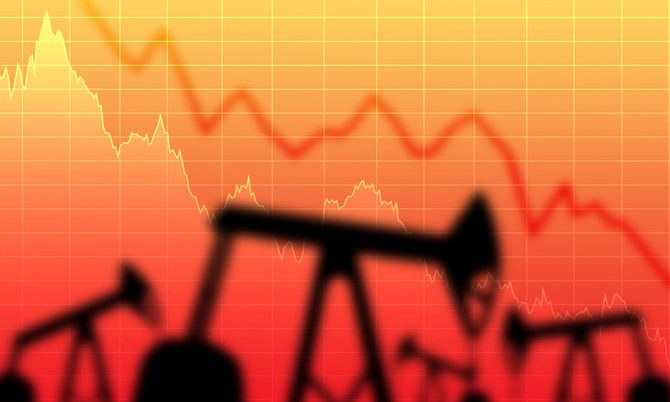Oil prices experienced a drop of nearly $1 on Wednesday in anticipation of the US Federal Reserve’s decision on interest rates. Investors are grappling with uncertainty regarding the timing of peak rates and the potential impact on energy demand, as reported by Reuters.
This decline occurred despite a larger-than-expected reduction in US oil stockpiles and indications of weak shale output in the country, which suggested tight crude supply for the remainder of 2023.
The global benchmark, Brent crude futures, saw a decrease of 88 cents, equivalent to 0.9 percent, settling at $93.46 per barrel by 9:50 a.m. Saudi time. Just the day before, Brent had reached $95.96, marking its highest level since November.
US West Texas Intermediate crude futures experienced a 1 percent decline, or 97 cents, reaching $90.23 per barrel. This followed its climb to a 10-month peak of $93.74 per barrel the previous day. Notably, the October WTI contract was set to expire on Wednesday, with the more active November contract down 82 cents, or 0.9 percent, at $89.66 per barrel.
Edward Moya, a senior market analyst at data and analytics firm OANDA, commented on the situation, stating that the oil rally is currently paused as traders await a pivotal decision from the Federal Reserve. This decision could sway the assessment of whether the US economy faces a soft or hard landing. Moya emphasized that the oil market remains “very tight” and is expected to stay so in the short term. He added that unless concerns arise on Wall Street about the Fed negatively impacting the economy, the outlook for crude demand should gradually soften. However, the oil market is likely to maintain a supply deficit throughout the winter.
Investors are closely monitoring a series of central bank interest rate decisions this week, including the Fed’s decision at 9:00 p.m. Saudi time on Wednesday. The focus will primarily be on the Fed’s projected policy path, which currently lacks clarity.
US crude oil stockpiles experienced a notable decrease last week, dropping by approximately 5.25 million barrels according to sources citing American Petroleum Institute figures. This figure surpassed analysts’ expectations in a Reuters poll, which had anticipated a decline of 2.2 million barrels.
Goldman Sachs analysts adjusted their 12-month ahead Brent forecast, raising it from $93 per barrel to $100 per barrel. The adjustment is attributed to expectations of slightly more substantial inventory draws. The main reasons include significantly lower OPEC supply, higher demand, and the offsetting effect of increased US supply. Goldman Sachs believes that OPEC will have the ability to sustain Brent within a range of $80 to $105 in 2024 by capitalizing on robust Asia-centric global demand growth and assertive pricing strategies.
In parallel developments, the Russian government is contemplating imposing higher export duties on all categories of oil products, amounting to $250 per metric ton, starting from October 1 and extending until June 2024. This move is aimed at addressing fuel shortages and comes as US oil output from its leading shale-producing regions is on a trajectory to reach 9.393 million barrels per day in October, marking the lowest level since May 2023. It follows the extension of combined supply cuts of 1.3 million bpd by Saudi Arabia and Russia until year-end.
On the demand side, government data revealed that India’s crude oil imports had declined for the third consecutive month in August. This trend emerged as refiners, located in the world’s third-largest importer of crude oil, carried out maintenance and reduced shipments from Russia.
Regarding supply, Exxon Mobil Corp. has committed to boosting oil production by nearly 40,000 bpd in Nigeria as part of a new investment initiative in the country. This information was conveyed by a presidential spokesperson, citing Exxon’s president of global upstream operations.
Source: Reuters










